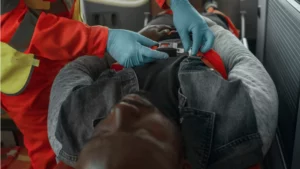June, July and August are some of the highest travel months due to school not being in session. The warmer weather also encourages people to either move to colder destinations or warmer ones. The summer months are known as some of the most dangerous times for younger drivers because of an increased rate of injury due to having a lot of free time, referred to as the 100 Deadliest Days” for teens. Other drivers can also be at risk while traveling as well as in their towns as well. Traveling to new locations can make someone anxious because they do not know exactly where they are going. GPS and map applications on our smartphones are making it easier than ever to feel comfortable.
RISKS DURING SUMMER TRAVEL
According to travelers.com data, over 100,000 crashes are caused by driver fatigue. This can be prevented by taking frequent breaks to break up a long drive and help reduce stress and fatigue. While using cruise control can seem helpful and convenient, it can also aid a driver in losing focus, and staying focused while in a new state, town, etc. is important. While GPS and apps are becoming more and more synonymous with traveling, doing your own research and feeling comfortable with a route is just as important. If your travel technology fails or your phone dies, then you won’t have any other options. Being aware of your destination’s weather can also help prepare for a difficult storm or help you decide to detour or postpone a couple of hours. Knowing the weather on your travel route is also extremely helpful, as to not bring any surprises.
SUMMER TRAFFIC
The summer months have a high increase in traffic conditions in the more popular tourist locations such as beaches and coastal towns. A massive influx of people to these areas has an added potential for traffic and accidents. Millions of international and national tourists will flock to the most popular summer destinations in the U.S. each summer. When a large group of people, who haven’t driven there before, travel to a new location, the possibility of accidents, anxiousness, and stress dramatically increases. There is a distinct correlation between how bad traffic is to the number of accidents that occur. Stay safe and choose an offseason to visit that location or choose another time of the summer that is likely to be less crowded.
TRAVEL SAFETY
Safety should always be your number one priority when traveling to a new location. Traveling safety includes:
- Understanding your route
- Taking frequent breaks to prevent fatigue
- Checking background and route weather forecast
- Vehicle checks-up (tires, fluids, and pads)
- Traveling at a less popular time, either earlier or later to avoid traffic and delay
Spector Law Group



































































































